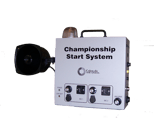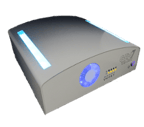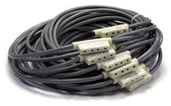Timing System Checkup
Test Your Equipment
Did you ever want to test the timing system before a meet and you didn’t have the time to set it all up? Here is a quick way to test everything without setting it up. The theory is to check out all the pieces. If all the pieces work, then the entire system should work.
Touch Pads
Check out the touch pads and PB-6s by using the touch pad meter. Make sure all the connectors are free of corrosion and they look new. Make sure it takes some force to plug them into the touch pad meter. Press on the pad / button and all the bars should light on the meter. With no touch, all the bars should be out. Touch pad meter directions are available via our online manuals.
Start System

Check out the Start System. Make sure the audio works and it will sound the beep. Make sure the strobe fires. The last step is to locate the “timer start” output and plug the SJ-25 cable into the Start System. The other end will plug into the female connector on the touch pad meter. When the horn sounds on the Start System, the bars on the touch pad meter will flash on. The pulse is very short so it will not display on the meter for very long.
Now do a visual check on the large black connector that plugs the Timer to the Touch pads or buttons. There are a lot of gold pins. Are these pins gold? If they are green or black, there may be corrosion building up preventing the touch pad or button signal from getting to the Timing Console.
Timing Console

Now turn on the Timing Console and go into the Swimming program. Connect the cable harness or in deck system. If you are using the cable harness, you do not even have to unroll the cable. Once plugged in, you can check the voltage at each Pad and Button positions by using the Touch pad meter. Plug the male end into the jack where the Touch pad / Button would normally plug in. All the bars will light if the correct voltage is at the terminals.
Cable Harness or Deckplates:


Check the voltage on the cable harness or the deck plates.
As you measure the voltage (using the TPM-D or a volt meter), record the voltage readings. All the voltages should be the same — between about 4.7 volts and 5 volts.
These records will reveal whether you have either of these two common problems:
- No voltage. This problem is typically caused by corrosion at one of the Amp connectors. In a cable harness system, this connector is at the end of the cable. On an in-deck system, the faulty connector could be either the one that connects the timer to the wall plate or the wall plate connector. The Amp connector on the wall plate usually corrodes more frequently because it is always in the pool environment. Check the Amp connectors to be sure the pins are clean and are gold in color.
- Low voltage. This problem might be caused by corrosion on the Amp connectors, but typically the problem is in the wiring in the harness or in the deck. If you still have a problem after you inspect the Amp connectors, call our service department at (970) 667-1000 x 256.

